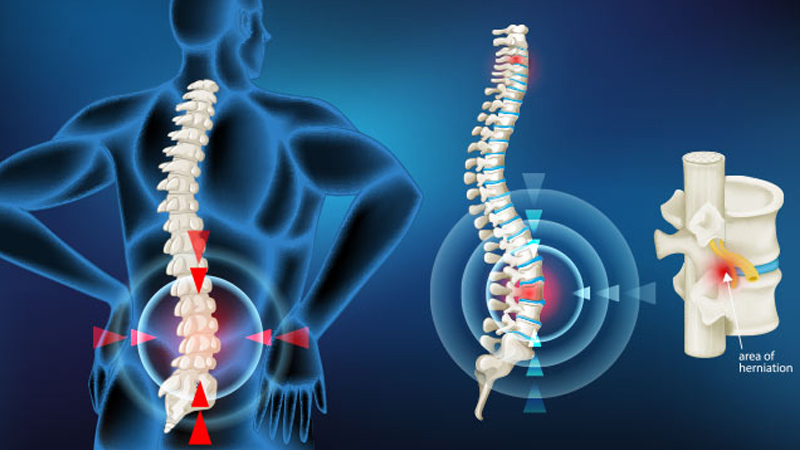
PLDD, short for percutaneous laser disc vaporization decompression, is one of the minimally invasive spinal surgery methods widely used in clinics. PLDD means that under the guidance of C-arm X-ray or CT, 16G or 18G puncture needle is inserted into the diseased cervical/lumbar intervertebral disc, 200-800μm optical fiber is introduced through the puncture needle, and then laser treatment system is started to emit laser to vaporize part of the nucleus pulposus of the intervertebral disc, thus reducing the pressure in the intervertebral disc. A minimally invasive surgical method for treating disc herniation. Treatment takes about 15 to 30 minutes, and 85% of patients respond immediately after treatment. About 3 days after the operation can be discharged, bed for 3-5 days. It is ideal for patients who do not respond well to non-surgical treatment.
Under the correct guidance of the C-arm, PLDD aims at the pathological condition in which the nucleus pulposus of the intervertebral disc protrudes from the annulus fibrosus rupture and compresses the peripheral nerve tissue, resulting in a series of clinical symptoms. The unique optical fiber is used to introduce lasers into the intervertebral disc, and part of the nucleus pulposus tissue is vaporized by laser heat. By reducing intervertebral disc pressure, eliminating inflammatory factors, and improving blood flow to the compressed nerve, the therapeutic purpose is achieved.
The thermal effect of laser on the surrounding tissue while vaporizing the intervertebral disc nucleus pulposus has attracted widespread attention. Sherk used a thermocouple to determine the maximum temperature at which laser vaporized samples of human intervertebral disc and nucleus pulposus tissue were collected. The three test sites, the vertebral rim, the annulus fibrosus and the spinal cord, were selected as test sites. The results showed that the maximum temperature of the three test sites was below 40℃. Therefore, it can be seen that the thermal effect of laser vaporization has little influence on the surrounding tissues, which does not reach the threshold of 60℃ to promote tissue degeneration. Therefore, the PLDD operation process is considered safe.
1. Simple operation, treatment under local anesthesia and short operating time.
2. The trauma caused by the operation is small (needle eye 1 mm).
3. Multiple intervertebral disc lesions can be treated at the same time.
4. Because there is no spinal canal procedure, intraoperative and postoperative complications are rare.
5. Short hospital stay.
6. Common scarring and bleeding problems will not occur after surgical treatment.
7. Patients suffer less pain and recover quickly.
Indications for cervical spine :
1. One or more cervical discs are herniated.
2. Neck pain, shoulder pain, shoulder numbness, dizziness and other diseases.
3. Imaging examination supported simple disc herniation.
Indications for lumbar spine:
1. Restrictive disc herniation on CT or MRI.
2. No disc calcification, dissociation, prolapse.
3. Straight leg lift tests positive.
4. Six weeks of conservative treatment failed.